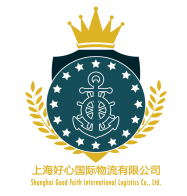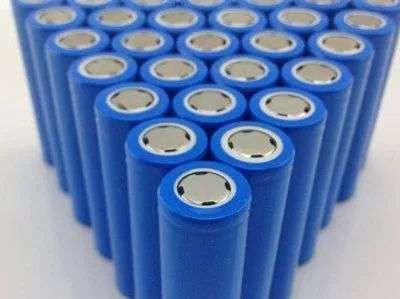|
Dangerous! Do you know how activated carbon and lithium batteries "cross the ocean"?◆ SGF & Import and export of dangerous goods ◆ Dangerous goods are diverse and versatile, and while promoting economic and social development and improving our quality of life, they also pose a serious challenge to the safety and health of human beings and the environment on which we depend. Since the reform and opening up, China's dangerous goods road transport has shown a rapid development trend, and the management of dangerous goods road transport has continued to strengthen, but safety problems still exist, and the momentum of frequent accidents has not been fundamentally curbed. I. What are Dangerous Goods & Hazardous Chemicals? Hazardous Chemicals Hazardous chemicals are highly toxic chemicals and other chemicals that have the properties of poisoning, corrosion, explosion, combustion, combustion, etc., and are harmful to the human body, the environment and facilities, as detailed in the Catalogue of Hazardous Chemicals. According to the relevant management regulations, after the institutional reform, the Customs is responsible for the inspection and supervision of the import and export of hazardous chemicals and their packaging. Dangerous Goods The Classification and Product Name Number of Dangerous Goods (GB6944) stipulates that dangerous goods refer to substances and articles that have explosive, flammable, toxic, infectious, corrosive, radioactive and other dangerous characteristics, and in transportation, storage, production, operation, use and disposal, are likely to cause personal injury, property damage or environmental pollution and require special protection. Distinguish between the two Dangerous goods contain substances and articles and have special requirements for packaging, while hazardous chemicals contain only chemical substances. Therefore, some dangerous goods are not hazardous chemicals, such as lithium batteries, batteries, matches, car airbags, etc. 2. Case links Recently, Shanghai Good Faith International Logistics undertook a shipment from Shanghai Port to Sukona Port in Egypt, and the cargo catalog includes precision instruments such as sterilizers and X-ray machines and dangerous goods. The total weight of the goods is about 14265.5kg, and the total volume is 53.90M3.
Among them, it contains lithium batteries and activated carbon. Unlike ordinary goods, how do they cross the ocean with special packaging and transportation requirements? Taking lithium batteries as an example, the volume of such dangerous goods is large, so will the export requirements be particularly strict and need to provide a lot of information? In fact, it is not always the case, lithium battery shipping Shanghai port export only need to provide the following information:
Dangerous warrant —— It mainly contains performance certificates and certificates of use. The performance list is relatively simple, and manufacturers who can generally make regular packaging can provide it; but the use certificate is relatively complicated, and it is necessary to cooperate with IMI identification and performance list to apply for the local commodity inspection bureau of the factory. Customs clearance information —— A set of customs declaration materials includes: box list, invoice, contract, customs declaration form, agent customs declaration power of attorney and declaration elements. 3. Customs Supervision Requirements & Precautions for Dangerous Goods Declaration Import of hazardous chemicals The Customs adopts the supervision mode of "port inspection + destination inspection" for imported hazardous chemicals, and the consignee or its agent of imported hazardous chemicals, the consignor of exported hazardous chemicals or its agent shall report to the Customs for inspection and apply for inspection. export of hazardous chemicals Customs adopts the supervision requirements of "origin inspection + port inspection" for the export of hazardous chemicals. The consignor or his agent who exports hazardous chemicals shall report to the customs of the place of origin for inspection and apply for inspection. Import and export of dangerous goods The Customs implements the "origin inspection" for the packaging of export dangerous goods, and after passing the customs inspection, it separately issues the "Inspection Result List of the Performance of the Outbound Cargo Transport Packaging" and the "Exit Dangerous Goods Transport Packaging Use Appraisal Result Sheet", commonly known as the "two certificates". 4. Current affairs express So, what is the impact of RCEP, which has attracted much attention in the industry, on the import and export industry of dangerous goods and chemicals? Reduction of tariffs For chemical products with high dependence on China's foreign countries, China has adopted a relatively conservative tariff policy, which will slow down the rapid increase in foreign dependence to a certain extent. For aromatics, China's import dependence on South Korea, Japan, Singapore, Brunei and other RCEP member countries is high, and the entry into force of the RCEP agreement has reduced tariffs and reduced the cost of raw materials to a large extent, but this will also strengthen the dependence of China's dangerous goods freight import enterprises on foreign countries in the short term, which will cause a certain impact on domestic related raw material production enterprises. For chemicals such as polyethylene, paraxylene (PX), refined terephthalic acid (PTA) and glycol (EG), China has not made a commitment to reduce or cancel tariffs to major trading countries such as Japan and South Korea, and has adopted a longer tax reduction period or remained unchanged after a slight reduction in the tax rate for Australia. There are still many high-end fine chemicals and new materials in China rely on imported resources, and Japan and South Korea are the main import sources of dangerous goods shipments of high-end chemical materials in China, the signing of RCEP has greatly reduced the cost of raw material procurement and sales costs, which is expected to accelerate the circulation of dangerous chemical import and export commodities in the chemical industry chain, create a larger trade scale, and help China's chemical products go abroad and alleviate the pressure of domestic overcapacity. Lower trade barriers Customs clearance procedures for dangerous goods have been simplified, and advance rulings, advance declarations, and the use of information technology have been used to promote the efficient handling of customs releases. |



